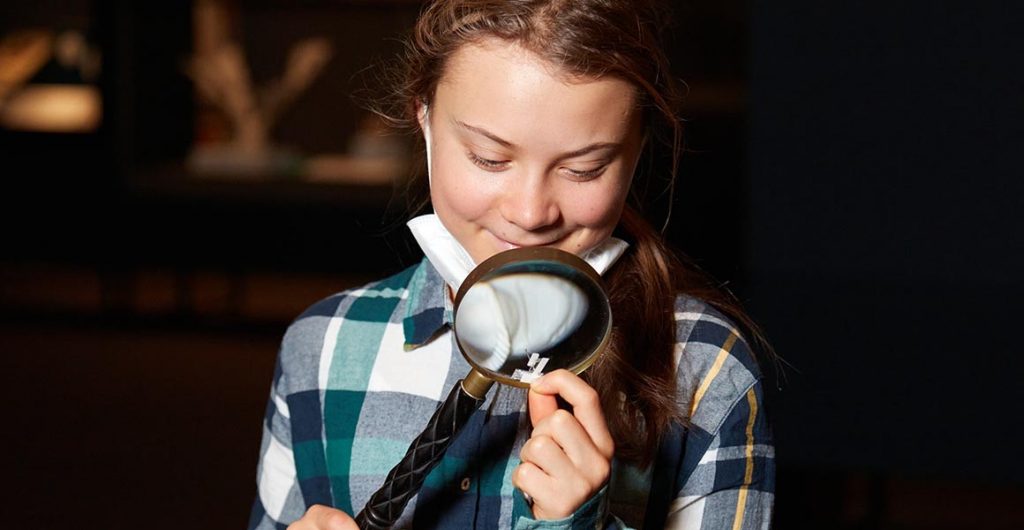One of the world’s most iconic climate and environment activists, Greta Thunberg, has visited the Natural History Museum in London where she explored its exhibition dedicated to the planetary emergency – Our Broken Planet: How We Got Here and Ways to Fix It. She also met the beetle which was named in her honour in 2019 – Nelloptodes gretae.

Our Broken Planet: How We Got Here and Ways to Fix It
This free to visit display explores how humans have transformed the natural world. Through over 40 objects chosen by Museum scientists, it reveals the consequences of our actions and examines some of the solutions that could mend our broken planet. It explores themes such as the food we eat, the products we use and the energy we consume. Underpinned by our scientific research it’s also deeply rooted in the possibility of addressing our relationship with the natural world.
The Greta Beetle
This new species of beetle was officially named in honour of Greta Thunberg in 2019. Nelloptodes gretae, which is less than 1mm long, belongs to the Ptiliidae family of beetles which includes some of the smallest insects in the world. Dr. Michael Darby, a Scientific Associate at the Natural History Museum, who named the beetle, said: “I chose this name as I am immensely impressed with the work of this young campaigner and wanted to acknowledge her outstanding contribution in raising awareness of environmental issues.”

It’s all very curious. In The Earth Emperor’s Eye, the teenager Sarah Whittenbury closely resembles Greta Thunberg’s appearance. Deeply concerned at the planet’s plight, Sarah declares herself as an Earth Detective and is gifted an I-Spy looking glass by Mother Nature to search for clues to inspire solutions to the global environmental and ecological crisis. The story also features The Beatles with Sarah regularly amused by her father’s obsession with the famous band, and their influence on his behaviour. Life is imitating Art!
